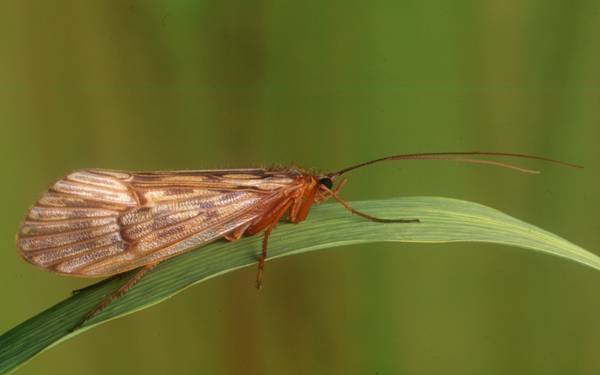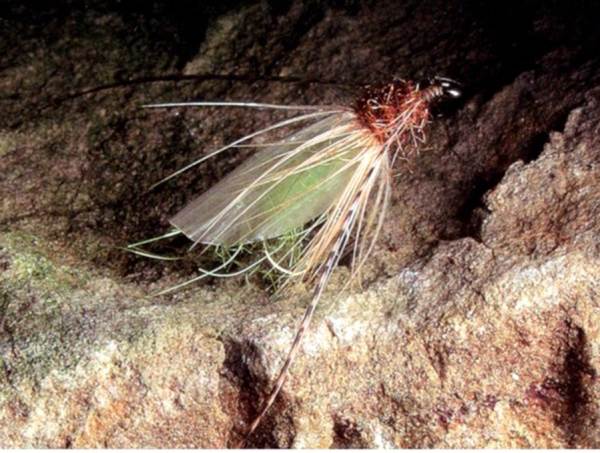Helesus radiatus and Helesus digitatus - Caperer
Phylum: Arthropoda - Class: Insecta - Order: Trichoptera - Family: Limnephilidae

The Caperer is one of the largest of the sedge flies found in Britain. It is seen on the wing in the evenings from mid-August until the end of October. Helesus radiatus and Helesus digitalis are macroscopically very similar, and the name Caperer covers both. Caperers are abundant on the chalk streams of southern England.

The larva makes its case from pieces of vegetation, often cementing one or two long sticks along the case, which provides protection since trout cannot then easily swallow the larva case and all.
Fishing tips
An emerging sedge pupa is a very effective fly on lakes and slow-flowing rivers on summer evenings. Here is an artificial pattern devised by Davey Wotton:
For copying the egg-laying adult Caperer, a size 12 G&H sedge is a very effective imitation and is best dragged across the surface just as darkness is descending. This tactic works well for trout and for sea trout.
References
O'Reilly, Pat. (1997; 8th reprint 2010) Matching the Hatch. Shrewsbury: Quiller Publishing.
Barnard, P & Ross, E. (2007) A Guide to the adult caddisflies or sedge flies (Trichoptera). Taunton: Field Studies Council.
Wallace, I. (2006) Simple Key to Caddis Larvae. Taunton: Field Studies Council.
Wallace, I.D., Wallace, B., & Philipson, G.M. (2003) Keys to the Case-bearing Caddis Larvae of Britain and Ireland. Ambleside: Freshwater Biological Association.
Macan, T.T. (1973) A Key to the Adults of the British Trichoptera. Ambleside: Freshwater Biological Association.
Excited at the prospect of flyfishing? So are we, and we're pretty sure you would find the Winding River Mystery trilogy of action-packed thrillers gripping reading too. Dead Drift, Dead Cert, and Dead End are Pat O'Reilly's latest river-and-flyfishing based novels, and now they are available in ebook format. Full details on our website here...
Buy each book for just £4.96 on Amazon...
Please Help Us: If you have found this information interesting and useful, please consider helping to keep First Nature online by making a small donation towards the web hosting and internet costs.
Any donations over and above the essential running costs will help support the conservation work of Plantlife, the Rivers Trust and charitable botanic gardens - as do author royalties and publisher proceeds from books by Pat and Sue.
